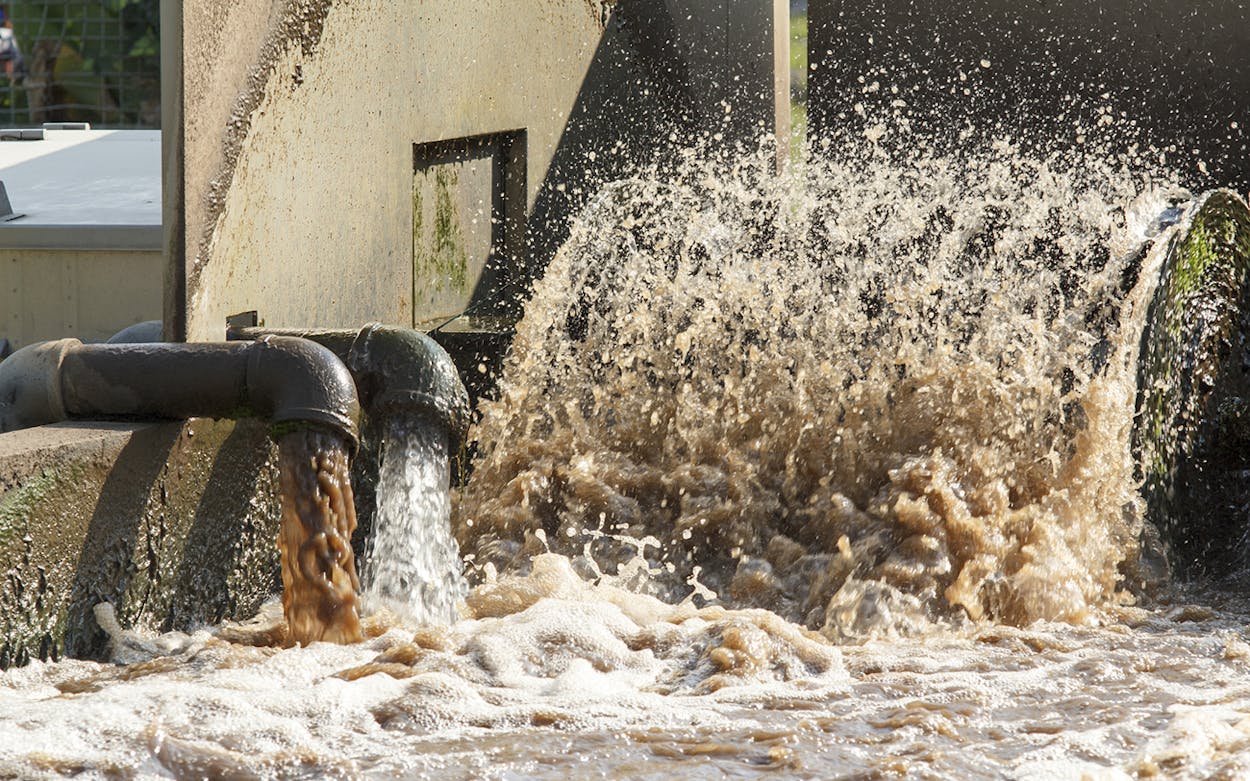How to handle wastewater is an expensive conundrum for the oil industry: as much as eight barrels of wastewater are produced for every barrel of oil pumped out of the ground. Most of this wastewater eventually has to be moved, usually by truck, and injected into a disposal well. The U.S. Energy Information Administration estimates that wastewater disposal costs oil producers anywhere from $1 to $8 per barrel of wastewater, making it one of the highest costs associated with oil production. In addition to the high cost for oil producers, wastewater injection into disposal wells has been linked to induced seismicity in some geologies.
Many have suggested that this wastewater could be treated and sold, turning a waste product into another source of revenue. Unfortunately, treating this wastewater is also a costly proposition. For starters, treating water of this quality requires distillation, that is, evaporating the water and separating it from the pollutants. The water vapor is then condensed and collected. The energy input for distillation is significantly higher than for conventional water treatment, but it is conceivable that it could be less costly than disposal.
In addition to the high energy cost, distillation units have high capital costs and require massive capacities, often millions of gallons a day, to achieve the economies of scale to be cost-competitive. Such capacities are much too large for the average oil well in Texas that produces only fifteen barrels of oil a day (also known as a stripper well). New wells in the Eagle Ford play in South Texas contribute over a thousand barrels of oil a day, but their production drops off significantly over time, making it a hard sell for producers to invest in a large-scale water treatment plant.
But the biggest barrier to treating produced water is the cost of getting it to customers. Treated water would need to be transported either by pipeline, a substantial capital investment, or by truck. All told, treating O&G wastewater at the well site and getting it to customers would likely be more expensive than just disposing of it.
SeaChange Technologies has another idea—vaporizing the wastewater and releasing it into the atmosphere. Vaporizing wastewater would dramatically reduce the volume of waste that oil producers have to dispose of without the additional costs associated with treating the water and selling it to customers.
One of SeaChange’s pilot-scale units can vaporize more than thirty barrels of water a day, enough to eliminate wastewater disposal needs for hundreds of thousands of stripper wells around the U.S. Two of these units can fit in a standard 20-foot shipping container, making it easy to scale up vaporization capacity for larger wells and move the vaporization units to other wells, as production dictates. Such a technology could be particularly beneficial for wells in remote locations where trucking costs for wastewater disposal are too expensive for production to continue.
Challenges remain for SeaChange’s technology to be adopted throughout the O&G industry. Vaporizing wastewater still requires significant energy inputs, but a basic thermodynamic calculation indicates that the energy costs could be as low as $1 per barrel of water, putting the cost of vaporization at the low end of the range of costs for wastewater disposal. Environmentalists will rightly be skeptical of the idea of emitting a cocktail of water vapor, heavy metals, and other pollutants into the atmosphere, but SeaChange contends that their technology meets EPA standards for air pollution.
Despite these challenges, SeaChange has won a slew of startup competitions, including the Duke Energy Initiative and SXSW Eco. SeaChange completed initial testing of their technology at Texas A&M University, and according to company founder Dipak Mahato, they are discussing placing their pilot units with oil-field service companies. If these pilot runs demonstrate that vaporizing wastewater can be more cost-effective than disposal, we could see a dramatic change in oilfield operations.
Andrew Reimers is a Ph.D. candidate in the Webber Energy Group at UT-Austin and an energy systems modeling intern at the National Renewable Energy Laboratory. His research focuses on technical and economic analysis of power generation and water treatment systems. Andrew blogs about current events related to energy and the environment at andrewreimersblog.com.
- More About:
- Energy






